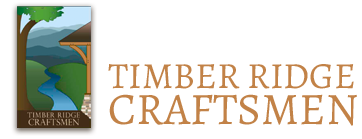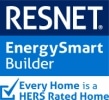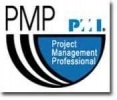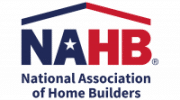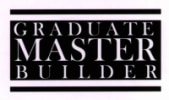True, ‘green’ home building, as a label, is a popular ‘flavor of the month’ for slick marketeers. Pitched as the latest can’t-live-without fad accessory by some builders and product manufacturers. Wariness of magical claims is well placed. Skepticism is warranted.
So what is ‘green’ building? What isn’t it ? And what does it mean when applied to the design and construction of your new home?
‘Green’ Building is . . .
Green building is an evolutionary flight forward to truly sustainable living. It is a recognition that our design and build choices have consequences, either enhancing or detracting from the wise goals of:
- Environmental health and diversity
- Resource management
- Systems integration, improving strength and durability
- Energy efficiency
- Fresh water conservation
- Indoor air quality
- Owner knowledge & empowerment
‘Green’ Building is not . . .
A Marketing Gimmick
Perceive the intentions of the ‘professional’ you are talking to. Read their eyes, and mannerisms. Do they care more about filling a ‘pipeline’ of supply, or do they want to learn what you need, want, expect, and care for? A true professional – is a servant of others. That is the highest calling we can aspire to. The rest, should busy themselves with cans of green paint (preferably zero-VOC).
Inherently Safer
Air-tight homes, air-tight building enclosures, have different rules. Sure they save you energy and increase your comfort. But they don’t play well together with open-flame/ atmospherically-vented combustion appliances. Dangerous combinations of components can be assembled by the unwitting designer, builder, or remodeler – to the detriment of the inhabitants. First, do no harm.
Intrinsically More Durable
Designers and builders had great ideas about durability – thousands of years ago, hundreds of years ago, even fifty years ago. Think of older homes and buildings you’ve lived in or experienced, which may have leaked air and energy, yes, but ‘had good bones’. Being new, or being labeled ‘green’, doesn’t save the unwitting designer, builder, or remodeler from their own idiocy. The last fifty years has seen an explosion of shoddy construction, under the delusion of “super-fast must be super-good”. For whom ? Certainly not for the owner of shoddiness.
Good buildings are durable. Some buildings labeled ‘green’ are good buildings, and some are not. If more insulation (supposedly a ‘green’ practice) is shoved into a wall cavity, that won’t fix bad bulk-water flashing detailing on the outside. But the slowed heat flow through the wall will cause it to dry out more slowly, increasing the risk of rot.
Less Expensive to Build
The up-front cost of greater energy-efficiency built into a building at inception often is greater than an otherwise-comparable code-compliant ‘average’ building. This initial investment is justified by the anticipation of energy-savings ‘pay back’ realized over years of use/ service. It’s also the right thing to do, of course. To take care of resources, instead of abusing them. To conserve and regenerate resources, to benefit yourself and others long into the future.
A Guarantee of Lower Utility Bills
Occupant behaviour is a major determinant in the energy-efficiency or water-conservation performance of a building. ‘Green’ certifications are best understood as the MPG statement on the window sticker of a new car. That model car will be driven by distinctly-different drivers, with actual gas mileage varying greatly because of that.
An Embossed Plaque or Gold Star
I remember a favorite teacher placing gold-star stickers on my first attempts to master addition and subtraction. Cherished memory – graduating from three gold stars to one big green one with iridescent sparkles!
Trophy-plaques may be a good thing, as long as they’re affixed with removable screws. A certificate of ‘green’ program compliance is not the same as actual tested or monitored performance. Remember this when salespeople want to dance and preen in front of you with awards of super-fantastic-ness. If they can’t serve YOUR needs, all of that is worthless. Salespeople want you to pay for ‘their’ certificates and awards, but you should determine up front the costs and benefits of proposed solutions, and make decisions that support your goals and objectives.
‘Green’ Building: Good Building in Practice
‘Green’ building proper, is good building in practice. After an intelligent design program is in place, after quality materials are assembled together in a durable manner: verification can begin.
Verification testing starts with the builder, and then should be checked and confirmed by an independent third party.
Builder Self-Verification
The builder’s own internal quality assurance and quality control program is an important first step. Applying the tools of quality control on site, the builder is able to confirm compliance with installation specifications and performance targets. Visual inspection and diagnostic tools are a key part of this process.
Checklists, such as those published by the Energy Star program for Version 3 of that progam, are immensely helpful: http://www.energystar.gov/ia/partners/bldrs_lenders_raters/downloads/InspectionChecklists.pdf
It is worth noting that while code-compliance inspections are required by most municipalities, and that these are becoming more stringent with improvements to recent updates to state and national codes, ‘code compliance’ is still a basement-floor level of performance/ specification. Unfortunately ‘built to code’ has, for many years, meant simply: building any worse would be illegal. Let us help you assess the benefits in projected energy savings for building ‘above code’, or up to a recognized energy program.
Independent Third-Party Verification
Many ‘green’ certification programs require a step beyond builder self-verification: inspection and rating by an independent thirdy-party verifier. This person is a valuable member of the design/ build team. Joining the project at the design or specification stage, prior to construction starting, the verifier can often offer insight and guidance on each of the ‘green’ building principles highlighted above.
The independent rater/ verifier uses many of the same inspection and diagnostic tools that better builders use to document adherence to a defined performance standard.
The de facto national standard for this type of verification, particularly for new residential construction, is the HERS Rater.
